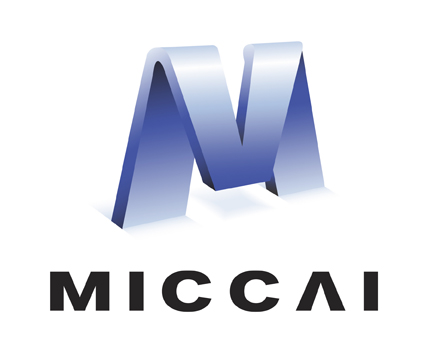Abstract
Modern machine learning systems, such as convolutional neural networks rely on a rich collection of training data to learn discriminative representations. In many medical imaging applications, unfortunately, collecting a large set of well-annotated data is prohibitively expensive. To overcome data shortage and facilitate representation learning, we develop Knowledge-guided Pretext Learning (KPL) that learns anatomy-related image representations in a pretext task under the guidance of knowledge from the downstream target task. In the context of utero-placental interface detection in placental ultrasound, we find that KPL substantially improves the quality of the learned representations without consuming data from external sources such as ImageNet. It outperforms the widely adopted supervised pre-training and self-supervised learning approaches across model capacities and dataset scales. Our results suggest that pretext learning is a promising direction for representation learning in medical image analysis, especially in the small data regime.
Access this chapter
Tax calculation will be finalised at checkout
Purchases are for personal use only
Similar content being viewed by others
Notes
- 1.
Tiny-VGG builts on VGG-13 [22], with 16-32-64-128-256 channels in five blocks. See Appendix.
References
Shin, H.-C., et al.: Deep convolutional neural networks for computer-aided detection: CNN architectures, dataset characteristics and transfer learning. IEEE Trans. Med. Imaging 35(5), 1285–1298 (2016)
Gulshan, V., et al.: Development and validation of a deep learning algorithm for detection of diabetic retinopathy in retinal fundus photographs. Jama 316(22), 2402–2410 (2016)
Esteva, A., et al.: Dermatologist-level classification of skin cancer with deep neural networks. Nature 542(7639), 115–118 (2017)
Lee, H., et al.: An explainable deep-learning algorithm for the detection of acute intracranial haemorrhage from small datasets. Nat. Biomed. Eng. 3(3), 173 (2019)
Qi, H., et al.: UPI-Net: semantic contour detection in placental ultrasound. In: ICCV-VRMI (2019)
Noroozi, M., Favaro, P.: Unsupervised learning of visual representations by solving jigsaw puzzles. In: Leibe, B., Matas, J., Sebe, N., Welling, M. (eds.) ECCV 2016. LNCS, vol. 9910, pp. 69–84. Springer, Cham (2016). https://doi.org/10.1007/978-3-319-46466-4_5
Taleb, A., et al.: Multimodal self-supervised learning for medical image analysis. arXiv preprint arXiv:1912.05396 (2019)
Raghu, M., et al.: Transfusion: understanding transfer learning for medical imaging. In: NeurIPS (2019)
He, K., et al.: Rethinking imagenet pre-training. In: ICCV (2019)
Szegedy, C., et al.: Going deeper with convolutions. In: CVPR (2015)
Misra, I., van der Maaten, L.: Self-supervised learning of pretext-invariant representations. arXiv preprint arXiv:1912.01991 (2019)
Gidaris, S., et al.: Unsupervised representation learning by predicting image rotations. In: ICLR (2018)
Tajbakhsh, N., et al.: Surrogate supervision for medical image analysis: effective deep learning from limited quantities of labeled data. In: ISBI (2019)
Doersch, C., et al.: Unsupervised visual representation learning by context prediction. In: ICCV (2015)
Bai, W., et al.: Self-supervised learning for cardiac MR image segmentation by anatomical position prediction. In: Shen, D., et al. (eds.) MICCAI 2019. LNCS, vol. 11765, pp. 541–549. Springer, Cham (2019). https://doi.org/10.1007/978-3-030-32245-8_60
Goyal, P., et al.: Scaling and benchmarking self-supervised visual representation learning. In: ICCV (2019)
Xie, S., Tu, Z.: Holistically-nested edge detection. In: ICCV (2015)
Yu, Z., et al.: Casenet: deep category-aware semantic edge detection. In: CVPR (2017)
Lawrence, S., Burns, I., Back, A., Tsoi, A.C., Giles, C.L.: Neural network classification and prior class probabilities. In: Montavon, G., Orr, G.B., Müller, K.-R. (eds.) Neural Networks: Tricks of the Trade. LNCS, vol. 7700, pp. 295–309. Springer, Heidelberg (2012). https://doi.org/10.1007/978-3-642-35289-8_19
Collins, S.L., et al.: Influence of power doppler gain setting on virtual organ computer-aided analysis indices in vivo: can use of the individual sub-noise gain level optimize information? Ultrasound Obstetr. Gynecol. 40(1), 75–80 (2012)
Irvin, J., et al.: CheXpert: a large chest radiograph dataset with uncertainty labels and expert comparison. In: AAAI (2019)
Simonyan, K., Zisserman, A.: Very deep convolutional networks for large-scale image recognition. arXiv preprint arXiv:1409.1556 (2014)
Arbelaez, P., et al.: Contour detection and hierarchical image segmentation. IEEE Trans. Pattern Anal. Mach. Intell. 33(5), 898–916 (2010)
Acknowledgements
Huan Qi is supported by a China Scholarship Council doctoral research fund (grant No. 201608060317). The NIH Eunice Kennedy Shriver National Institute of Child Health and Human Development Human Placenta Project UO1 HD 087209, EPSRC grant EP/M013774/1, and ERC-ADG-2015 694581 are also acknowledged.
Author information
Authors and Affiliations
Corresponding author
Editor information
Editors and Affiliations
Appendix
Appendix
Rights and permissions
Copyright information
© 2020 Springer Nature Switzerland AG
About this paper
Cite this paper
Qi, H., Collins, S., Noble, J.A. (2020). Knowledge-Guided Pretext Learning for Utero-Placental Interface Detection. In: Martel, A.L., et al. Medical Image Computing and Computer Assisted Intervention – MICCAI 2020. MICCAI 2020. Lecture Notes in Computer Science(), vol 12261. Springer, Cham. https://doi.org/10.1007/978-3-030-59710-8_57
Download citation
DOI: https://doi.org/10.1007/978-3-030-59710-8_57
Published:
Publisher Name: Springer, Cham
Print ISBN: 978-3-030-59709-2
Online ISBN: 978-3-030-59710-8
eBook Packages: Computer ScienceComputer Science (R0)





